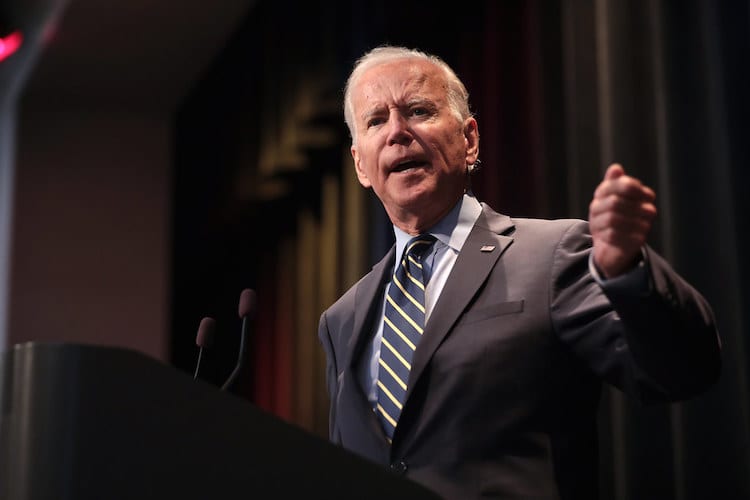How Joe Biden’s “Made in All of America” Plan Intends to Boost American Industry

Since winning the Democratic nomination, Joe Biden and his team have worked to shift his campaign promises and pledges into actionable policy. Now, as President-Elect, the clock is ticking for Biden to have a full vision for his first 100 days in office, and the next four years.
To his credit, Biden has already announced plans on climate, social justice, and COVID containment that will be enacted within his first 100 days in the White House. However, one area where the Biden team has been light on details thus far has been the economy.
We know what Biden’s tax plan looks like, plus his thoughts on student debt relief. The major aspect of Biden’s economic recovery is his “Made in All of America” plan to reinvigorate domestic manufacturing. However, like his tax proposal and student loan ideas, it’s unclear when these plans will be acted on or reap rewards.
Here’s what we know about the Made in All of America plan so far, and what it might mean.
Made in All of America
The U.S. was the world leader in manufacturing immediately after World War II, but that has significantly changed. According to the Biden team’s platform, the President-Elect has plans to propel America back to the top of the pack.
In short, Biden plans to encourage manufacturers to bring jobs back to America, invest $700 billion in American manufacturing, and invest in small businesses and those owned by people of color, and bring supply chains back to America.
“[Biden] does not buy for one second that the vitality of U.S. manufacturing is a thing of the past,” the Biden site says. “U.S. manufacturing was the Arsenal of Democracy in World War II, and must be part of the Arsenal of American Prosperity today, helping fuel an economic recovery for working families.”
Biden’s proposal, on the surface, is not unlike President Donald Trump’s, who ran in 2016 on a platform of bringing manufacturing back to the American Midwest. However, in his plan, the incoming president criticized Trump’s ties to corporations and failed trade wars as some of the reasons his economic plan fell short.
Buy American
One of the central aspects of Biden’s economic plan is a pledge to “Buy American.” The Buy American Act, a 1933 legislation, requires that the federal government favor U.S. businesses over foreign companies when purchasing goods. As mentioned above, Biden intends to put $700 billion toward manufacturing firms – $400 billion for purchasing goods and $300 billion for spurring research and development.
“Biden will use the government’s purchasing power to Buy American, boosting U.S. industries through a historic procurement investment he is announcing today and an ambitious extension of his infrastructure and clean energy plans that he will announce soon,” according to Biden’s site.
To accomplish this goal, Biden says he’ll modernize, adapt, and adjust Buy American regulations. For instance, he intends to requalify what it takes for a product to be labeled “Made in America,” since only 51 percent of the components of a product need to be American-made to justify the tag. The Buy American Act also offers numerous waivers to companies seeking to import goods, but Biden feels that these waivers turn the act from law to mere suggestion. Not only does he plan to close “loopholes” in the waiver process, but Biden will also publish a list of waiver requests from companies who plan to outsource goods to increase accountability.
He also plans to ensure that U.S. goods are transported on U.S. ships, hopefully increasing demand for both merchant marine sailors and American craft. In addition, the President-Elect seeks to end the “invent it here, make it there” tactic employed by companies who get government funds for research but develop their products in other countries.
“The days of taxpayer benefits going to companies that seek to outsource jobs or avoid paying their fair share of taxes are over,” Biden’s platform says.
The Bottom Line
The critical aspect still missing from Biden’s manufacturing boost is when. The Made in All of America plan notes that the administration will conduct a 100-day review of supply chains immediately after inauguration, but there are no other timeframes given in the platform.
Of course, this plan isn’t the only one that will impact our economic recovery. While the coronavirus pandemic still rages, it’s nearly impossible for the economy to fully heal. Biden has been clear and specific about his plans to combat COVID-19 in his first 100 days in office. That process, plus vaccinations, could help stabilize the economy significantly. While we wait for more specifics on Biden’s manufacturing renaissance plan, it’s important to remember that resparking economic growth is a central aspect to nearly all of the President-Elect’s plans.
Read More: The Fed Signals Interest Rates Will Remain Near Zero Through 2023









